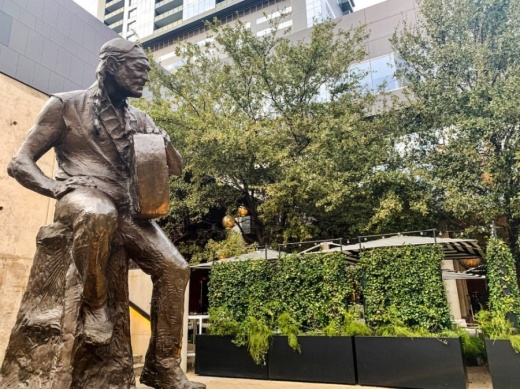Although these efforts come in the wake of the pandemic’s decimation of the live music and arts industries, they are initiatives the city has discussed for years, from the mayor’s 2016 Music and Creative Arts Omnibus resolution to the $12 million creative spaces bond, but has moved slowly to accomplish. The coronavirus’s devastating impact on local and legacy venues has sparked a renewed sense of urgency from city leaders to get moving on a longstanding to-do list to save the city’s cultural economy
Cody Cowan, executive director of the Red River Merchants Association, which represents the dense collection of live music venues along Austin’s famed Red River Street, has been advocating for the dire needs of the association’s members pre- and post-pandemic. His organization recently sent a letter to Austin City Council outlining the ways local government could help save the industry—most of it sounded familiar.
“It’s basically a compilation of the greatest hits from the past 5 years and past 60 days,” Cowan said. “The proposal is [essentially], ‘Do you want live music again?’ As it stands, there still hasn’t been a dollar spent by the local government into the music economy.”
Austin City Council responded by moving on two sweeping initiatives May 21 that included, generally, many of the long and short-term priorities the city has talked about for years, but with added urgency.
Farsighted efforts, which Mayor Steve Adler said aimed at the long-term health of the industry, include accelerating 2018 bond projects that would deliver improvements to cultural facilities such as the Emma S. Barrientos Mexican-American Cultural Center and the George Washington Carver Museum. The city will also consider converting city-owned buildings, such as the old fire station at 3020 Guadalupe St. into cultural spaces, and look at new development for opportunities to provide fresh spaces for musicians and artists.
The city also set a June 30 deadline for the city to send out solicitations for organizations to use the $12 million creative spaces bond that taxpayers passed in 2018.
In a more immediately focused resolution drafted by District 9 City Council Member Kathie Tovo, the council unanimously pushed the staff to look into acquiring existing venues and other properties to help stabilize the Red River Cultural District, specifically. Tovo’s effort also sought permitting help on right-of-way fees and outdoor cafes for the district’s venues. Tovo admitted none of the worries held by the music industry are new.
“These have been long-term concerns,” Tovo told Community Impact Newspaper. “There are always a lot of things going on at the city. We have a variety of really pressing concerns.”
Cowan said music venues are at a disadvantage and don’t qualify for much of the federal assistance because even with a payroll protection loan, they would not be able to open back up and bring revenue in the door. The Red River Merchants Association’s proposal estimated it would cost $2 million to help venues stay afloat while stages remain empty, and asked the city to spend $35 million to purchase some of the venues most at risk.
“We’re not seeing one economic disaster, but two: affordability was already putting the squeeze on working people and small businesses,” Cowan said. “We see this as the nail in the coffin. Live music venues were the first to go and will be the last to show. No one will survive long without income. The question of ‘Do you want live music again?’ is valuable and valid.”





